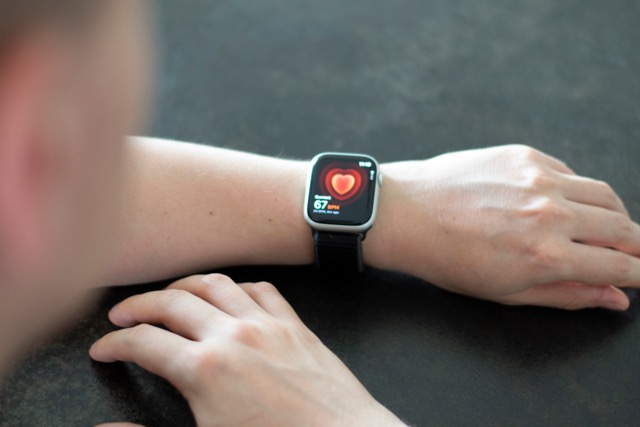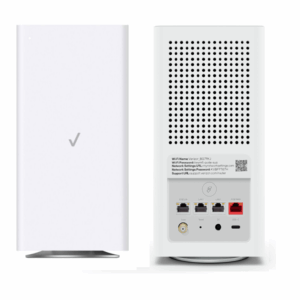Table of Contents
What is Heart Rate Monitoring?
Heart rate monitoring is the process of tracking the number of heartbeats per minute (BPM). This measurement provides valuable insights into a person’s cardiovascular health and fitness levels. Many wearable devices, including the Apple Watch, have made heart rate monitoring accessible and convenient.
How Heart Rate Monitoring Works
Heart rate monitoring typically employs one of two methods:
- Electrocardiography (ECG):
- Measures the electrical activity of the heart.
- Provides detailed information about heart rhythms and can detect irregularities.
- Photoplethysmography (PPG):
- Uses light sensors to detect blood flow changes.
- Commonly used in wearable devices like the Apple Watch.
Importance of Heart Rate Monitoring
Monitoring your heart rate offers several benefits:
- Exercise Optimization: Helps individuals train within their target heart rate zones for improved performance.
- Health Awareness: Can indicate potential health issues, prompting users to consult healthcare professionals.
- Progress Tracking: Allows for monitoring changes in cardiovascular fitness over time.
How Accurate is Apple Watch Heart Rate?
The Apple Watch is known for its heart rate monitoring capabilities. Many users appreciate the convenience of having real-time data on their wrist. While the watch generally provides reliable readings, it’s essential to consider factors that can affect accuracy:
- Wrist Placement: The watch should fit snugly against your wrist for optimal results.
- Activity Type: Higher intensity workouts may lead to less precise readings.
- Skin Condition: Factors such as tattoos or skin tone can impact light absorption, affecting accuracy.
Importance of Accurate Heart Rate Measurement
Accurate heart rate measurement is crucial for both fitness enthusiasts and casual users. Understanding how precise your heart rate data is can significantly impact your training and overall health.
Benefits of Accurate Heart Rate Measurement
- Optimizing Workouts
- Knowing your heart rate helps you train within specific zones:
- Fat Burn Zone: Ideal for weight loss.
- Cardio Zone: Enhances cardiovascular endurance.
- Peak Zone: Builds maximum performance.
- Using devices like the Apple Watch can help you stay in these zones, but it’s essential to consider how accurate is Apple Watch heart rate data to achieve your goals.
- Knowing your heart rate helps you train within specific zones:
- Monitoring Health Conditions
- Accurate readings can help identify irregularities in heart rhythm, prompting timely medical attention.
- Users can track their heart rate trends over time, allowing for better management of conditions like hypertension.
- Assessing Fitness Progress
- Monitoring your resting heart rate can indicate improvements in cardiovascular fitness.
- As you get fitter, your resting heart rate typically decreases. This trend can be tracked accurately with reliable heart rate data.
- Enhancing Recovery
- Post-exercise heart rate recovery is a critical indicator of fitness.
- Accurate measurements can help you understand how quickly your heart returns to resting levels after a workout.
Factors Affecting Accuracy
To ensure you get the most accurate heart rate readings, consider the following factors:
- Device Fit: Ensure your Apple Watch is snug against your wrist.
- Body Temperature: Cold weather can affect circulation and, consequently, heart rate measurements.
- Motion: High-intensity activities may lead to fluctuations in accuracy.
How Does the Apple Watch Measure Heart Rate?
The Apple Watch is equipped with advanced technology to monitor heart rate effectively. Understanding how this measurement works can help users make the most of their fitness tracking.
Technology Behind Heart Rate Measurement
The Apple Watch primarily uses two methods to measure heart rate:
- Photoplethysmography (PPG)
- How It Works: PPG uses green LED lights and light-sensitive photodiodes on the back of the watch.
- Detection of Blood Flow: When the heart beats, blood flow increases, and the watch detects changes in light absorption. This data is used to calculate your heart rate.
- Continuous Monitoring: PPG allows for real-time heart rate tracking during activities and throughout the day.
- Electrocardiography (ECG)
- How It Works: The ECG feature measures the electrical signals of the heart.
- Single-lead ECG: Users can take an ECG by placing a finger on the Digital Crown for 30 seconds, providing a snapshot of heart rhythm.
- Detection of Irregularities: This method can help identify conditions such as atrial fibrillation (AFib).
Importance of Accurate Measurement
Understanding how accurate is Apple Watch heart rate monitoring can enhance user experience. Accurate readings are essential for:
- Training Effectiveness: Helps users stay within their target heart rate zones for optimal performance.
- Health Monitoring: Reliable data can indicate health issues, prompting users to seek medical advice.
Factors Influencing Measurement Accuracy
Several factors can affect the accuracy of heart rate readings on the Apple Watch:
- Wrist Placement: The watch should be snugly fitted on the wrist to ensure proper sensor contact.
- Motion: Intense movements can lead to fluctuations in heart rate accuracy.
- Skin Conditions: Tattoos, skin tone, and body hair may affect light absorption, influencing readings.
Factors Affecting Heart Rate Accuracy
Accurate heart rate measurement is essential for effective fitness tracking and health monitoring. Several factors can influence the accuracy of heart rate readings, especially when using devices like the Apple Watch. Understanding these factors can help users optimize their experience and make informed decisions about their fitness.
- Device Fit
- Snug Fit: The Apple Watch should fit snugly against your wrist. A loose fit can result in inaccurate readings.
- Positioning: The watch should be worn about one finger’s width above the wrist bone for optimal sensor placement.
- Skin Conditions
- Skin Tone: Variations in skin tone can affect light absorption, leading to less reliable readings.
- Tattoos and Body Hair: Tattoos and significant body hair can obstruct light, impacting sensor performance.
- Activity Type
- Type of Exercise: High-intensity activities or rapid movements can cause fluctuations in heart rate accuracy.
- Heart Rate Zones: Different exercises may lead to different heart rate responses, making it essential to understand how accurate is Apple Watch heart rate during various activities.
- Temperature and Hydration
- Body Temperature: Cold weather can constrict blood vessels, affecting the accuracy of readings.
- Hydration Levels: Dehydration can impact circulation and lead to inaccurate heart rate measurements.
- Motion Artifacts
- Increased Movement: Rapid or erratic movements can interfere with sensor readings. It’s crucial to maintain a steady wrist position during activities for better accuracy.
Comparing Apple Watch to Other Devices
When it comes to heart rate monitoring, the Apple Watch is a popular choice among fitness enthusiasts. However, several other devices offer similar features. This section compares the Apple Watch with alternative fitness trackers and smartwatches, evaluating their accuracy and functionality.
- Apple Watch vs. Fitbit
- Accuracy: Both devices utilize photoplethysmography for heart rate monitoring. Studies suggest that the Apple Watch may provide slightly more accurate readings during intense workouts.
- Features:
- Apple Watch: Offers ECG functionality and integration with Apple Health.
- Fitbit: Focuses on activity tracking, sleep monitoring, and community features.
- Apple Watch vs. Garmin
- Accuracy: Garmin devices, especially in the Forerunner and Fenix series, are known for their accuracy in heart rate tracking, particularly during outdoor activities.
- Features:
- Apple Watch: Provides a wide range of apps and customization.
- Garmin: Emphasizes advanced metrics for athletes, including VO2 max and training load.
- Apple Watch vs. Polar
- Accuracy: Polar devices, such as the Polar H10 heart rate sensor, are considered gold standards for accuracy but require a chest strap for optimal performance.
- Features:
- Apple Watch: Offers convenience with wrist-based monitoring.
- Polar: Focuses on precise heart rate data, making it ideal for serious athletes.
Evaluating How Accurate is Apple Watch Heart Rate
When comparing the Apple Watch to other devices, it’s essential to consider how accurate is Apple Watch heart rate. While the watch performs well in many scenarios, individual experiences may vary based on factors like wrist fit, skin tone, and activity type.
is a skilled Web Developer and Designer. He builds and designs websites that focus on best UI/UX practices. Justin is also a Verizon Product Expert at Victra, helping customers with Verizon products and services. His mix of design, coding, product, and general knowledge makes him a valuable and knowledgeable team member.




